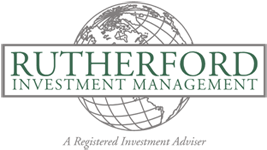Published January 8, 2018

At this point in time a year ago, the new U.S. president, Donald Trump, had been elected in what was considered a surprising result. A shock went through the market, as many investors considered their options amid changes in the investment climate.
The options frequently included exiting the market. Sworn into office in mid-January, President Trump offered cold comfort to the market. In a dystopian inaugural address he offered a bleak view of the U.S. While most presidents, particularly in their first term, offer promise and hope in an effort to unite the nation, Trump poured cold water on the American dream. The markets were confused and discouraged.
Still, out of this cloud of doubt, the equity markets began to show strength. While the headline news continued to be frightening, the economy was expanding. Led by technology, profits began to climb. Health care and discretionary consumer stocks added support. At the start of the year, Fact Sheet predicted 9 percent earnings growth for the first quarter of the year. Instead, earnings growth for the period increased 14 percent. The expansion continued throughout the year, but at a slower pace.
At this time last year, the Dow was about 20,000; today it is near 25,000. The S&P has gone from roughly 2,260 to 2,680, year over year. The Nasdaq was 5,500 last Christmas and near 7,000 now. A synchronized pickup in growth around the world led stock markets to multiyear highs.
2017 was remarkable, even astonishing, for investors, as few would have predicted this outcome. Those investors who ignored the headlines and focused on the fundamentals were rewarded. The year was a good illustration of why an investor should not try to time the markets, or respond to headline news (turn off CNBC and Fox News) and let good managers of good companies provide good earnings and sound growth and get out of their way.
Warren Buffett has frequently said, “My holding period is forever.” While we do not entirely subscribe to the “forever” mantra (e.g., IBM and GE), we do believe it is important to be fully invested and have a long-term perspective. By calendar years, the market goes up over 70 percent of the time. If you can win 70 percent of the time, you might want to keep your bets on the table.
In spite of its remarkable year, ranking as one of the best ever, the market still presents opportunity. Gross domestic product increased over 3 percent in the third quarter, the fastest quarterly rate for any year in the past several. Consumer confidence has been strong, although it weakened in the past month. Holiday spending shows strong growth, exhibiting the strongest year-over-year gain since 2011. While the U.S. economy appears strong, it is good to have a few worries.
The S&P is now trading at 18.3 times forward earnings up from 16.9 at the end of 2016, which makes it historically expensive compared with other global benchmarks.
The tax reform bill has yet to take effect, so we don’t really know what will happen. Projections may be priced into the market and may be too optimistic, so the market could be due for a setback. Such a setback would be long overdue; not unusual for such a long bull market. Such a setback might well be constructive and of little long-term consequence.
One of the provisions of the tax reform bill will encourage the repatriation of over a trillion dollars on U.S. deposits held overseas. This money will have to go somewhere, and the pockets of investors is a likely somewhere. Mergers, acquisitions and buybacks should all increase. Wages and salaries also have the potential to increase. Capital spending should increase. The tax cuts should boost earnings growth and stock prices, although there will be some companies with one-time charges for reversing prior deductions of loss carryforwards. Interest rates could decrease, even though the Federal Reserve has indicated that it wants three interest rate increases this year. The fixed income market and the Federal Reserve may be at cross purposes. The dollar could rise because of the interest rate increases, but the dollar could cheapen because of the repartition of dollars. If the dollar rises, it will be harder to sell U.S. goods overseas. If it falls, foreign sales by U.S. companies could increase.
The euro is on pace for its biggest yearly gain against the dollar since 2003 with a rise of 14 percent. The British pound is up 9.4 percent against the dollar for the year and the yen climbed 4 percent, as global investors cooled toward the U.S.
In the background is the promise of infrastructure spending, although that seems unlikely in the near term, not only because it takes a long time to ramp up big projects, but also because the tax reform bill comes with a trillion-dollar deficit that will constrain government spending.
What can go wrong? Lots, according to history. North Korea could be one trouble spot, but our own unsettled government could provide many surprises. However, it is still better to be fully invested long term. Remember what Will Rogers was known to say: “In times like these, it is good to remember that there will always be times like these.”
William Rutherford is the founder and portfolio manager of Portland-based Rutherford Investment Management. Contact him at 888-755-6546 or wrutherford@rutherfordinvestment.com. Information herein is from sources believed to be reliable, but accuracy and completeness cannot be guaranteed. Investment involves risk and may result in losses.
